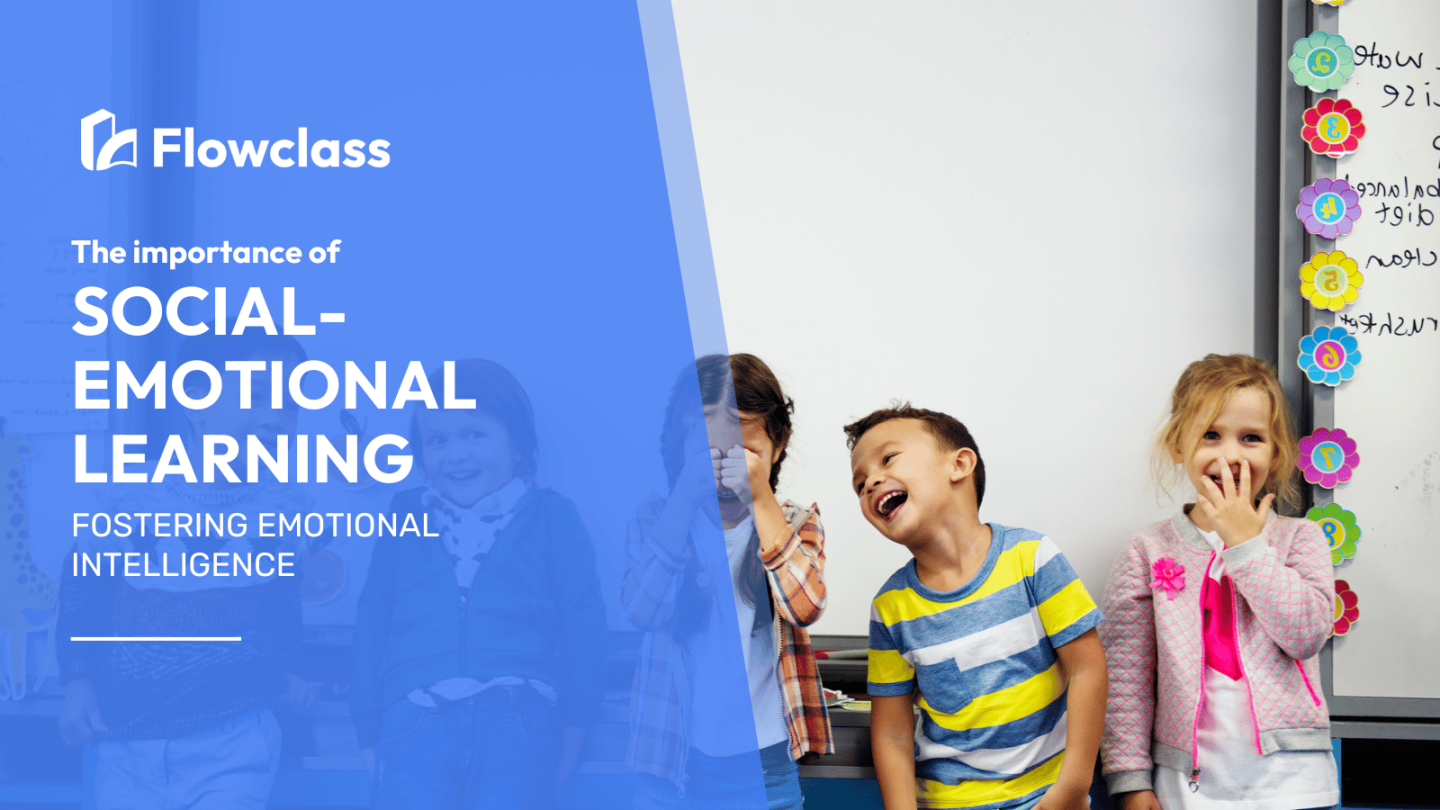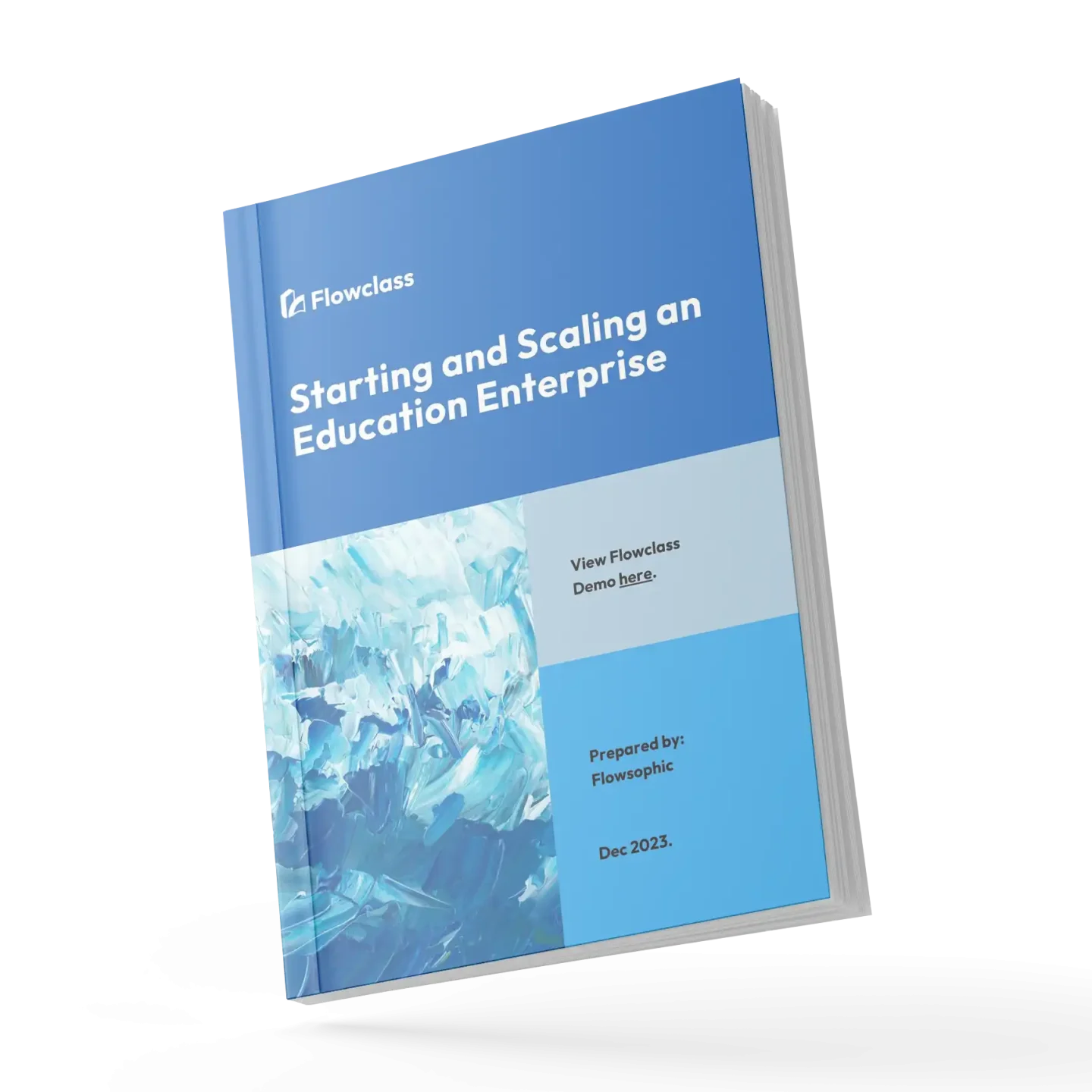In a world dominated by technical skills and academic achievements, fostering emotional intelligence has become more important than ever. Social-emotional learning, or SEL, is a powerful tool that equips individuals with the ability to understand and manage their emotions, empathize with others, and establish positive relationships.
Emotional intelligence plays a crucial role in personal and professional success, impacting everything from communication and decision-making to leadership and teamwork. It enables individuals to navigate challenging situations and adapt to ever-changing environments.
In this article, we explore the beauty of social-emotional learning and delve into the various ways it can be fostered in different settings, such as schools, workplaces, and homes. Join us as we discover the transformative power of emotional intelligence and how it can positively shape our relationships and lives.
What is social-emotional learning (SEL)?

Social-emotional learning (SEL) is a comprehensive approach to education that aims to equip individuals with the skills and knowledge necessary to understand, manage, and express their emotions effectively. It focuses on developing essential competencies such as self-awareness, self-management, social awareness, relationship skills, and responsible decision-making.
At the core of SEL is the belief that emotional intelligence is just as important as academic intelligence in shaping an individual’s overall well-being and success. By cultivating these skills, SEL empowers individuals to navigate the complexities of life, build meaningful connections with others, and make informed choices that align with their values and goals.
Through SEL, individuals learn to recognize and label their emotions, develop strategies to regulate their feelings and build empathy and compassion for those around them. This holistic approach to learning goes beyond the traditional focus on cognitive development, acknowledging the vital role that emotions play in our personal and professional lives.
The importance of fostering emotional intelligence in individuals
In today’s fast-paced and ever-changing world, the ability to navigate the emotional landscape is becoming increasingly crucial. Emotional intelligence, defined as the capacity to understand, manage, and reason with emotions, is a key predictor of an individual’s overall well-being and success.
Individuals with high emotional intelligence are better equipped to handle stress, resolve conflicts, and forge meaningful relationships. They are more self-aware, able to empathize with others, and adept at making decisions that align with their values and goals. This, in turn, leads to improved mental health, enhanced communication skills, and more effective leadership abilities.
Fostering emotional intelligence is not just about personal growth; it also has far-reaching implications for society as a whole. Emotionally intelligent individuals are more likely to contribute positively to their communities, demonstrate compassion and understanding, and work collaboratively to address complex challenges. By investing in the development of emotional intelligence, we can create a more empathetic, resilient, and thriving world.
The benefits of social-emotional learning in schools

Schools play a pivotal role in shaping the social and emotional development of young learners. Integrating social-emotional learning (SEL) into the curriculum can have a profound impact on students’ overall well-being and academic performance.
One of the primary benefits of SEL in schools is the enhancement of students’ self-awareness and self-management skills. By learning to identify and regulate their emotions, students become better equipped to navigate the social and academic demands of school life. This, in turn, leads to improved decision-making, problem-solving, and conflict resolution abilities.
Moreover, SEL fosters the development of empathy and social awareness, enabling students to build stronger, more meaningful connections with their peers and teachers. This enhanced social competence not only improves classroom dynamics but also lays the foundation for healthy relationships throughout life.
Numerous studies have demonstrated the positive impact of SEL on academic achievement. Students who participate in SEL programs tend to exhibit higher levels of engagement, motivation, and academic performance, as the skills acquired through SEL support their overall learning and development.
By prioritizing SEL in schools, we can empower students to become well-rounded individuals who are better prepared to navigate the challenges and opportunities of the 21st century. This holistic approach to education has the potential to transform not only individual lives but also the fabric of our communities.
How social-emotional learning contributes to personal growth and well-being
Social-emotional learning (SEL) is not just about enhancing academic or professional success; it is a powerful tool for fostering personal growth and well-being. By developing emotional intelligence, individuals can cultivate a deeper understanding of themselves and their relationships with others.
One of the key benefits of SEL is the enhancement of self-awareness. As individuals learn to identify and manage their emotions, they gain a better understanding of their personal strengths, weaknesses, and values. This self-knowledge empowers them to make more informed decisions, set realistic goals, and build a strong sense of self-esteem.
Additionally, SEL helps individuals develop empathy and social awareness, enabling them to navigate the complexities of interpersonal relationships with greater ease. By learning to recognize and respond to the emotions of others, individuals can build stronger, more meaningful connections, fostering a sense of belonging and community.
The skills acquired through SEL also contribute to improved mental health and well-being. By equipping individuals with effective stress management and coping strategies, SEL can help reduce the negative impact of anxiety, depression, and other mental health challenges. This, in turn, can lead to increased resilience, life satisfaction, and overall quality of life.
Moreover, SEL empowers individuals to make responsible decisions that align with their values and long-term goals. This decision-making process, rooted in self-awareness and social awareness, can lead to greater personal fulfillment and a sense of purpose, ultimately enhancing one’s overall well-being.
Implementing social-emotional learning in educational settings
Integrating social-emotional learning (SEL) into educational settings is a crucial step in fostering the holistic development of students. This comprehensive approach to learning requires a strategic and multifaceted implementation plan that addresses the unique needs and challenges of each school or district.
One of the first steps in implementing SEL in educational settings is to establish a clear vision and set of goals. School administrators, teachers, and stakeholders must collaborate to define the specific competencies they aim to develop in their students, such as self-awareness, self-management, social awareness, relationship skills, and responsible decision-making.
Once the goals are established, schools can begin to develop and adapt their curriculum to incorporate SEL-focused lessons and activities. This may involve integrating SEL concepts into existing academic subjects, creating dedicated SEL classes, or implementing school-wide programs that address the emotional and social needs of students.
Effective implementation of SEL also requires ongoing professional development for teachers and staff. Educators must be equipped with the knowledge, skills, and resources necessary to effectively deliver SEL-based instruction and foster a supportive, emotionally-aware classroom environment.
Additionally, schools should consider involving families and the broader community in the SEL implementation process. By engaging parents and caregivers, schools can ensure a consistent approach to social-emotional learning, reinforcing the skills and strategies learned in the classroom at home.
Ultimately, the successful implementation of SEL in educational settings requires a holistic, collaborative, and sustained effort. By prioritizing the development of emotional intelligence alongside academic achievement, schools can empower students to thrive both in and out of the classroom.
Strategies for promoting emotional intelligence among students

Fostering emotional intelligence among students is a multifaceted endeavor that requires a diverse range of strategies and interventions. By employing a comprehensive approach, educators can support the social-emotional development of their students, empowering them to navigate the complexities of life with greater ease and resilience.
One effective strategy for promoting emotional intelligence is the integration of mindfulness and self-reflection practices into the curriculum. Activities such as meditation, journaling, and guided discussions can help students develop self-awareness, self-regulation, and the ability to manage stress and emotions.
Collaborative learning and group-based activities are also powerful tools for cultivating emotional intelligence. By engaging in teamwork, problem-solving, and conflict resolution, students learn to empathize with others, communicate effectively, and build strong interpersonal skills.
Educators can further support the development of emotional intelligence by modeling and explicitly teaching emotional management strategies. This can include lessons on identifying and labeling emotions, regulating impulses, and using positive self-talk to navigate challenging situations.
Additionally, schools can foster emotional intelligence by creating a supportive and inclusive school culture that celebrates diversity, encourages open communication, and promotes a sense of belonging. This can be achieved through school-wide initiatives, such as anti-bullying campaigns, peer mentorship programs, and community-building events.
Ultimately, the promotion of emotional intelligence among students requires a multi-pronged approach that addresses both the individual and the broader school environment. By prioritizing the development of these essential skills, educators can empower students to thrive academically, socially, and emotionally.
The role of teachers and parents in supporting life-skills-based education
Teachers and parents play a pivotal role in supporting the social-emotional learning (SEL) of children and adolescents. As primary influencers in a young person’s life, they have the power to shape the development of emotional intelligence and foster the skills necessary for personal and academic success.
For teachers, supporting SEL involves creating a classroom environment that prioritizes the emotional well-being of students. This includes modeling and explicitly teaching emotional regulation strategies, fostering empathetic relationships with students, and incorporating SEL-focused activities and lessons into the curriculum.
Teachers can also collaborate with school counselors, social workers, and other support staff to ensure a comprehensive and coordinated approach to SEL. By working together, educators can identify and address the unique social-emotional needs of each student, providing targeted interventions and resources as needed.
Moreover, teachers can empower students to become active participants in their own social-emotional development. By encouraging self-reflection, goal-setting, and peer-to-peer support, teachers can help students take ownership of their emotional growth and cultivate a sense of agency and resilience.
Similarly, parents play a crucial role in supporting SEL at home. By fostering open communication, validating emotions, and modeling healthy coping strategies, parents can reinforce the skills and strategies learned in the classroom. This consistency and alignment between home and school environments can significantly enhance the effectiveness of SEL interventions.
Furthermore, parents can collaborate with teachers and school administrators to ensure that SEL is integrated into the broader educational experience. By participating in school-based SEL initiatives, volunteering, and advocating for the inclusion of emotional intelligence in the curriculum, parents can contribute to the creation of a supportive and nurturing environment for their children’s social-emotional development.
Integrating social-emotional learning into the curriculum
Integrating social-emotional learning (SEL) into the curriculum is a strategic and multifaceted process that requires a comprehensive approach. By weaving SEL principles and practices into the academic framework, educators can create a holistic learning environment that supports the development of the whole child.
One effective way to integrate SEL into the curriculum is by aligning it with core academic subjects. For example, in language arts classes, students can explore literature through the lens of emotional intelligence, analyzing characters’ emotional journeys and the impact of their decisions. In mathematics, students can apply SEL skills, such as problem-solving and critical thinking, to real-world scenarios.
Additionally, schools can create dedicated SEL-focused courses or incorporate SEL-based activities and lessons into existing classes. These dedicated SEL modules can cover a wide range of topics, including self-awareness, self-management, social awareness, relationship skills, and responsible decision-making.
To ensure the effective integration of SEL, educators should also consider the unique needs and developmental stages of their students. By tailoring SEL interventions to the age and grade level of the learners, schools can create a seamless and age-appropriate learning experience that resonates with students.
Furthermore, the integration of SEL into the curriculum should be supported by ongoing professional development for teachers. Educators must be equipped with the knowledge, skills, and resources necessary to effectively deliver SEL-based instruction and foster a supportive, emotionally-aware classroom environment.
By prioritizing the integration of SEL into the curriculum, schools can empower students to develop the essential skills and competencies needed to navigate the complexities of life. This holistic approach to education has the potential to transform not only individual lives but also the fabric of our communities.
Evaluating the effectiveness of life-skills-based education
Evaluating the effectiveness of social-emotional learning (SEL) programs is a crucial step in ensuring the long-term success and impact of these initiatives. By implementing a comprehensive assessment strategy, schools and organizations can measure the progress and outcomes of their SEL interventions, making informed decisions about program refinement and resource allocation.
One key aspect of evaluating SEL programs is the assessment of student outcomes. This can involve tracking changes in students’ social-emotional competencies, such as self-awareness, self-management, social awareness, relationship skills, and responsible decision-making. Standardized assessments, student surveys, and teacher/parent observations can provide valuable insights into the impact of SEL on individual students.
In addition to student-level outcomes, it is essential to evaluate the broader impact of SEL programs on the school or organizational culture. Measures such as student engagement, attendance rates, disciplinary incidents, and academic performance can serve as indicators of the program’s effectiveness in creating a more supportive and nurturing environment.
Qualitative data, such as student and stakeholder feedback, can also provide valuable insights into the perceived benefits and challenges of SEL programs. By gathering feedback through focus groups, interviews, and open-ended surveys, educators and administrators can better understand the lived experiences of those impacted by the interventions.
To ensure the reliability and validity of SEL program evaluations, it is crucial to employ a combination of quantitative and qualitative assessment methods. This multi-dimensional approach can help identify areas of strength, pinpoint opportunities for improvement, and provide a comprehensive understanding of the program’s overall effectiveness.
Furthermore, the evaluation process should be an ongoing and iterative endeavor, with regular data collection and analysis informing the continuous refinement and enhancement of SEL initiatives. By embracing a culture of continuous improvement, schools and organizations can ensure that their SEL programs remain relevant, impactful, and responsive to the evolving needs of their community.
Conclusion: The long-term impact of life-skills-based education on individuals and society
As we have explored throughout this article, social-emotional learning (SEL) is a powerful and transformative approach to education that has the potential to shape the lives of individuals and the fabric of our society. By prioritizing the development of emotional intelligence alongside academic achievement, we can empower individuals to thrive in an increasingly complex and interconnected world.
The long-term impact of SEL on individuals is far-reaching and profound. By equipping individuals with the skills to understand and manage their emotions, build meaningful relationships, and make responsible decisions, SEL lays the foundation for personal growth, well-being, and success. Emotionally intelligent individuals are better equipped to navigate the challenges of life, adapt to change, and contribute positively to their communities.
Moreover, the societal implications of SEL are equally significant. As individuals with strong emotional intelligence become more prevalent in our communities, schools, workplaces, and beyond, we can witness a ripple effect of empathy, collaboration, and problem-solving. This, in turn, can lead to the creation of more resilient, inclusive, and thriving communities that are better equipped to address complex global issues.
Ultimately, the long-term impact of SEL on individuals and society cannot be overstated. By prioritizing the development of emotional intelligence, we are investing in the future of our world – a future where individuals are empowered to lead fulfilling lives, foster meaningful connections, and work together to create a more just, equitable, and compassionate society.
As we move forward, we must continue to champion the importance of SEL and advocate for its integration into educational systems, workplace cultures, and community initiatives. By doing so, we can unlock the transformative power of emotional intelligence and pave the way for a brighter, more resilient, and more connected world.
📣 Want to read more educational articles like this? Check out our Flowclass blogs!


